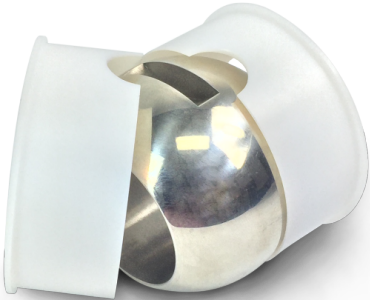Cavity Filler for Ball Valves
 Many of our ball valves can be supplied with full-body cavity fillers.
Cavity fillers fill the void normally found behind the ball and the valve
body in conventionally designed ball valves. Cavity fillers assures that no
media is allowed to become trapped above, below, or around the valve ball or
the body cavity. Cavity fillers prevent freezing or seizing, while also
reducing the possibility of cross contamination of medias.
Applications involving paint, pigments, or process systems sensitive to
cross contamination or crystallization (ex. sodium hypochlorite) benefit
from a cavity filler. These are commonly used for sanitary food,
beverage and pharmaceutical applications to ensure thorough CIP
sanitization. Reliability is enhanced for ball valves used for slurry
and viscous liquid applications which might dry-out or otherwise impede
operation of the valve. Cavity
fillers are supplied in PTFE and TFM materials.
Many of our ball valves can be supplied with full-body cavity fillers.
Cavity fillers fill the void normally found behind the ball and the valve
body in conventionally designed ball valves. Cavity fillers assures that no
media is allowed to become trapped above, below, or around the valve ball or
the body cavity. Cavity fillers prevent freezing or seizing, while also
reducing the possibility of cross contamination of medias.
Applications involving paint, pigments, or process systems sensitive to
cross contamination or crystallization (ex. sodium hypochlorite) benefit
from a cavity filler. These are commonly used for sanitary food,
beverage and pharmaceutical applications to ensure thorough CIP
sanitization. Reliability is enhanced for ball valves used for slurry
and viscous liquid applications which might dry-out or otherwise impede
operation of the valve. Cavity
fillers are supplied in PTFE and TFM materials.




